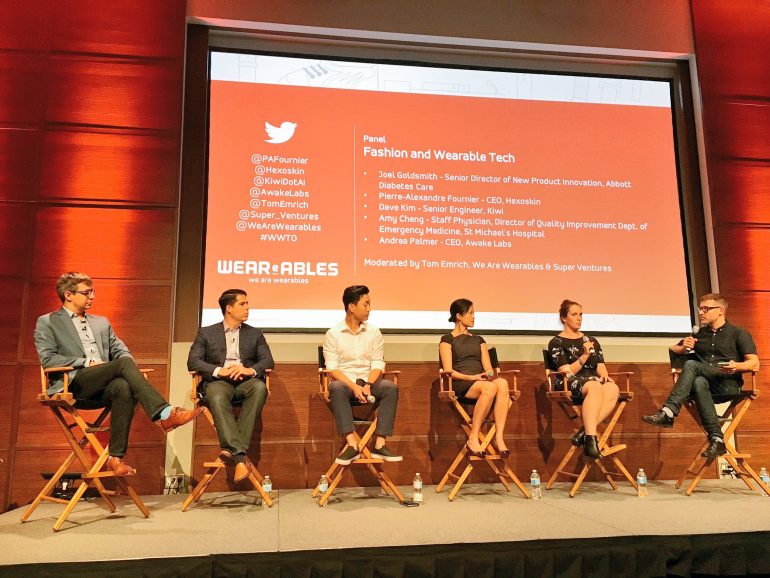While many past We Are Wearables Toronto events have explored the wearable industry’s impact on lighter, consumer-facing industries like fashion, virtual reality, and cameras, this month’s meetup decided to look at a more complicated aspect of industries where wearables will have an impact — incorporating data gleaned from wearables into healthcare.
To invite a diversity of perspectives, the event hosted speakers and panelists across both the health care and wearable startup spaces like Jim Caldwell, director of IBM’s Internet Of Things, industry solutions development division; Joel Goldsmith, senior director of new product innovation at Abbott Diabetes Care; and Pierre-Alexandre Fournier, CEO of Hexoskin.
“As medical apps become regulated, that will enable us to iterate more quickly.”
The speakers acknowledged that creating health wearables was a slow and challenging process, but that they were building the foundation for tech that can be useful later on. For his part, Hexoskin CEO Pierre Fournier shared a roadmap of how he thought that big data would make its way into healthcare.
.pafournier leverages his years of experience at Hexoskin to outline a roadmap for #digitalhealth #WWTO pic.twitter.com/aF9SAnjQNd
— MW (@mayur_wadhwani) September 13, 2016
The speakers were also joined by Kiwi senior engineer Dave Kim, St. Michael’s Hospital director of quality improvement dept of emergency medicine and staff physician Amy Cheng, and Awake Labs CEO Andrea Palmer for a panel discussion on the barriers to entry both for the startups and healthcare professionals thinking about incorporating wearables into their practice.
Fournier said that there is already a large gap between doctor and patient understanding of data, and in order to encourage patients to adopt the tech, there needs to be support from the health care system itself. “Patients won’t be able to afford these devices or understand why they’re necessary,” said Fournier. “There needs to be support from the health care system. We’re in a system where we heavily subsidize everything that’s being done between the walls of a hospital, but everything outside of that lacks funding.”
No better feeling than sharing how excited we get over wearable therapeutics. Thanks @WeAreWearables #WWTO !
— Alexa (@AlexaRoeper) September 13, 2016
Even for the doctors, the value of data gleaned from wearables isn’t immediately obvious. “It hasn’t been presented in a way that they’re used to reading data — for example, it should be presented in a way we look at ECGs,” said Cheng. “The problem right now is that if you’re using this information, to use it in a clinical format it has to be in the patient’s medical record, whether it’s on an iPhone or on a printout, and each hospital uses a different patient medical record system.”
For startups, the challenge comes from the fact that health and regulatory institutions don’t present any guidelines for startups. “We are developing our whole platform to eventually become a medical device. Our goal is to be as useful as possible and to do that quickly we have to go to market with regulatory approval,” said Palmer, whose company develops a wearable for caregivers to track the wellbeing of patients with autism. “So phones and operating systems are currently unregulated, but as medical apps become regulated, that will enable us to iterate more quickly.”


